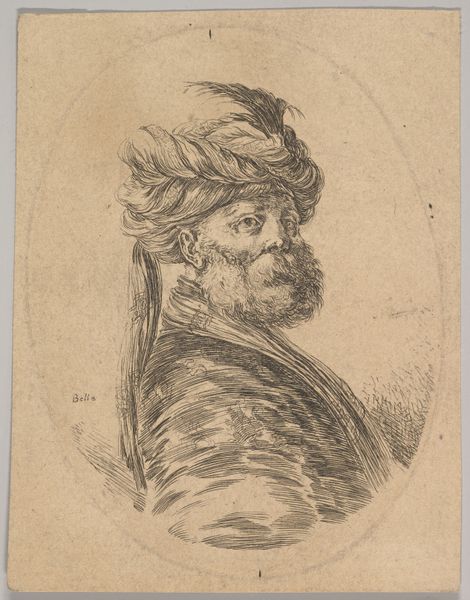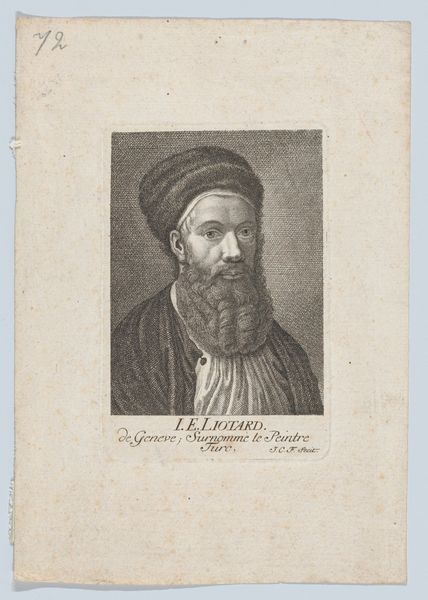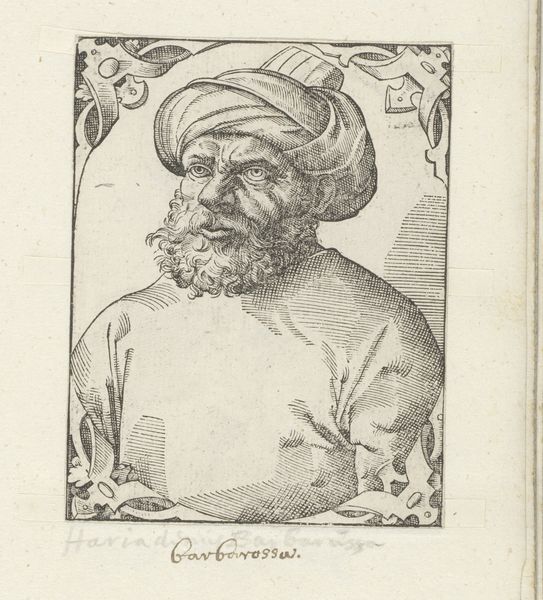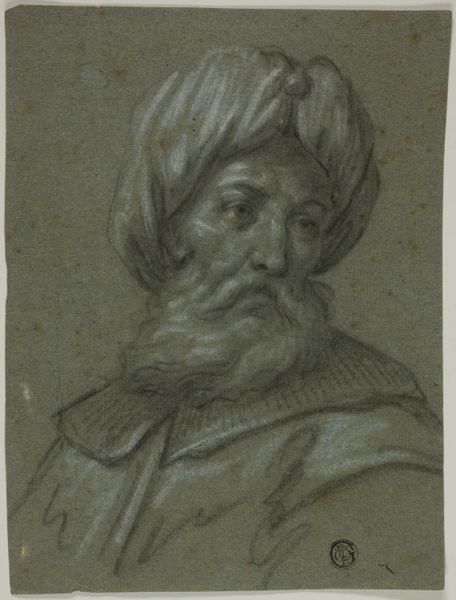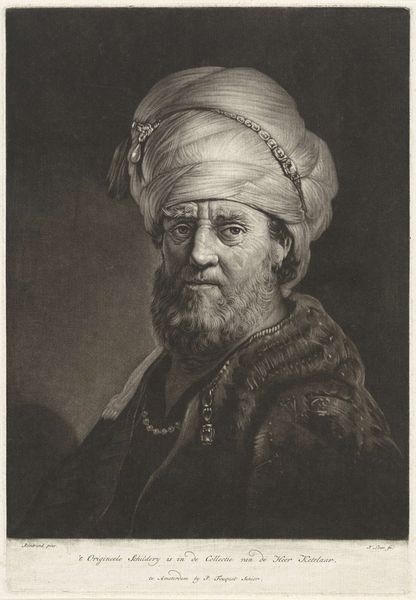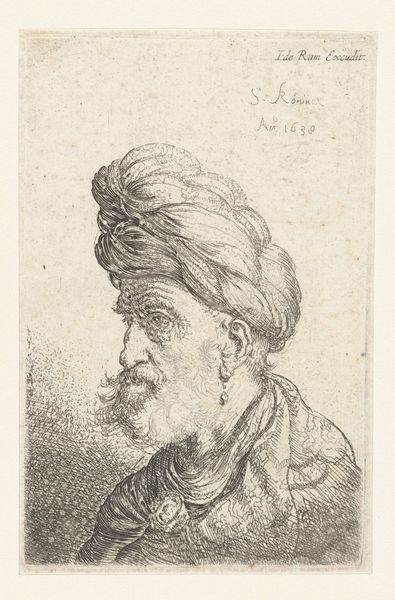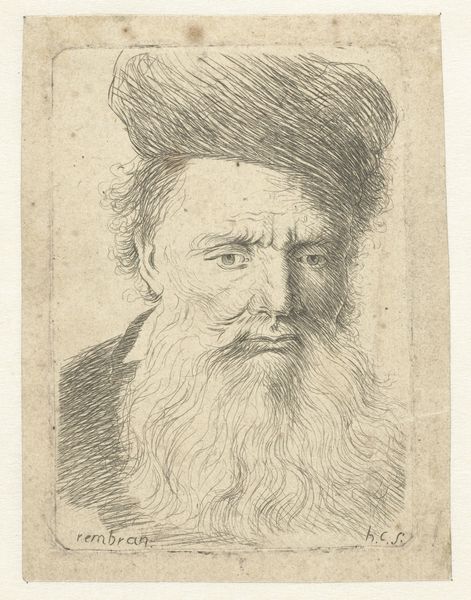
Dimensions: 2 3/16 x 1 3/4 in. (5.6 x 4.5 cm) (image)2 7/8 x 2 7/16 in. (7.3 x 6.2 cm) (sheet)
Copyright: Public Domain
Jean-Pierre Norblin de la Gourdaine created this etching, "Head of a Man with Turban," likely in the late 18th or early 19th century. The turban immediately suggests a connection to the East, a region that captivated the European imagination during this period. Norblin was a French-Polish artist, and this image reflects a broader European fascination with exoticism and the "Orient." The image creates meaning through its visual shorthand: the turban, the man's facial features, all referencing a world that was both distant and alluring to European audiences. The work was made at a time of growing imperial expansion, as empires such as the British, French and Russian sought to extend their reach further East and consolidate their colonial power. Understanding this etching requires considering the history of Orientalism and the power dynamics between Europe and the East. Art historians delve into travel narratives, colonial records, and cultural exchanges to uncover the complex meanings embedded within such images. Ultimately, this work serves as a reminder that art is never created in a vacuum but is shaped by social, political, and institutional forces.
Comments
minneapolisinstituteofart almost 2 years ago
⋮
Jean-Pierre Norblin de la Gourdaine was a French painter and printmaker active in Poland in the late 18th century. Norblin's charming miniature etchings, representing mostly male heads, street sellers, and vagabonds, reflect both in subject and technique the profound influence of Rembrandt's prints. Norblin was also drawn to Polish subjects, capturing the unfamiliar, exotic world around him in his depictions of men with colossal fur hats and curled moustaches, Cossacks, and Polish historical figures.
Join the conversation
Join millions of artists and users on Artera today and experience the ultimate creative platform.


